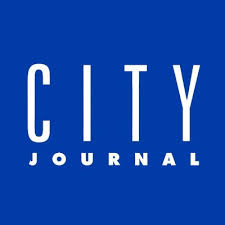Misjudging Clarence Thomas

Misjudging Clarence Thomas
Corey Robin’s assessment of the Supreme Court justice is lost in left field.
Myron Magnet
September 29, 2019 Arts and CulturePolitics and law
The Enigma of Clarence Thomas, by Corey Robin (Metropolitan Books, 320 pp., $27)
What deliciously ironic wit the New Yorker’s first art editor, Rea Irvin, deployed in his iconic drawing of Eustace Tilley, the Regency dandy quizzically inspecting a butterfly through a monocle on the magazine’s inaugural cover nearly a century ago. Ah yes, we Gotham cosmopolites view the rest of America as exotic insects worth a moment’s gaze as they hatch from the basket of deplorables and flit by for their 24 hours in the sun. But, Irvin hinted, what an affected fop is Eustace himself—as showy as the bright creature catching his glance but oh, how much more contrived in his top hat and impossibly high neckcloth. I can’t help wishing that Corey Robin, a Brooklyn College professor who has made a career of turning a supercilious monocle on conservatives and explaining their curious, “reactionary” ideas to his fellow enlightened “progressives,” had shown a scintilla of Irvin’s wry self-knowledge in his new book, The Enigma of Clarence Thomas, an excerpt of which the New Yorker coincidentally has just published. But since Robin’s assessment of the Supreme Court justice lacks a single self-questioning moment, let’s look back at him through his monocle and take our own measure of the author before we consider his account of our era’s greatest jurist.
How fashions have changed! Despite a modish dash of race, class, and gender, today’s New Yorker of refined sensibility, if Robin is a representative specimen, presents himself in his book as a conventional socialist, an admirer of the French rather than the American Revolution, and still mooning with nostalgia for that imaginary 1960s “revolution” that Bernie Sanders has dreamt of since his long-ago youth. In Robin’s vision, politics centers on the “power the state will have to involve itself in the affairs of the citizens,” making “rules for a more just and humane economy.” It is a realm of “democratic transformation, where men and women act deliberatively and collectively to alter their estate,” led by the “heroic action of an elite few,” masters of “the arts of persuasion, the mobilization and transformation of popular belief”—though Robin’s evocation of the Robespierres and Lenins of the world is bound to make one wonder just how democratic his vision of the popular will really is. What were the editors of the publication for which he writes a column thinking when they called it Jacobin, after a political elite that wrought its social transformation by removing the heads of those of the wrong class or opinion?
For Robin, capitalism is a system of “overwhelming, anti-democratic constraint” that takes “the great questions of society—justice, equality, freedom, distribution—off the table of public deliberation,” shielding them from “the conscious and collective interference of citizens acting through their government.” In this collectivist vein, he casts a cold eye on Madison’s classic formulation of American constitutionalism in Federalist 10. The Constitution protects life, liberty, and property, Madison writes, and since individual citizens have a boundless variety of talents, ambitions, and energies, the liberty the Constitution safeguards will result in different and unequal outcomes, including economic inequality. The danger in the democratic republic that the Constitution frames, Madison wrote, is that the unpropertied majority could use their voting numbers to expropriate the wealth of the rich few, trampling the Constitution’s protection of property. Such an expropriation is what Madison meant by the tyranny of the majority, and a key goal of the Constitution’s checks and balances is to forestall just that. When Robin holds up Justice Thomas’s citation of Madison’s argument as a mere ploy “to moralize moneymaking, to lend the market a legitimacy it had been denied by New Deal liberalism, to shield money and the market from political critique,” he seems to be looking at the Constitution through the wrong end of a telescope, seeing FDR and the New Deal’s tyranny of the majority, rather than James Madison and the protection of individual liberty, as the nation’s real Founding Father. Of the individual citizen whose liberty the Constitution is meant to shield, we hear nary a word until a third of the way through the book, and then only once or twice thereafter. Everyone is simply an atom dissolved in the mass of race, class, or gender.
The lens through which Robin views Thomas is even more distorting—not surprising, given that he “reject[s] virtually all of Thomas’s views” and moreover believes that the justice, during his confirmation hearings, “lied to the Judiciary Committee when he stated that he never sexually harassed Anita Hill,” an allegation that’s now the stock, and thus increasingly incredible, gambit for opponents of conservative judicial nominees. In the justice’s opinions, what Robin sees, as anyone who spends even an hour or two reading them must see, is Thomas’s striking concern with race, a subject that he raises repeatedly, even in cases seemingly far from the question. Upon this observation, Robin erects a wildly far-fetched account of the justice’s worldview and jurisprudence, one that imperiously sweeps away Thomas’s own careful exposition of his intellectual journey in his speeches and memoir as if he must be incapable of understanding his own mind and heart. But of course, this concern springs not just from Thomas’s personal history but also from the belief, central to his jurisprudence, that it’s precisely on race matters that the Court has made so many fateful wrong turns that need correction. Continue reading
